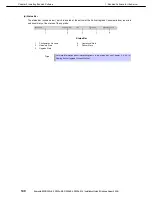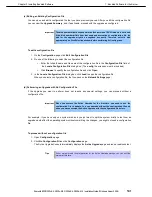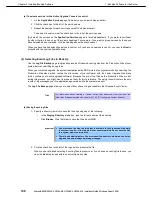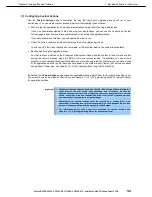
1. Bundled Software for the Server
Express5800/R320c-E4, R320c-M4, R320d-E4, R320d-M4 Installation Guide (Windows Server 2008)
146
Chapter 2 Installing Bundled Software
(a) To select system and data disks
•
For any disk you want to mark as a system disk, click the
System
radio button.
•
For any disk you want to mark as a data disk, click the
Data
radio button.
•
When you are finished selecting disks, you can click
Next
to proceed with the next configuration step.
Tips
Volumes can span multiple physical disks, and physical disks can contain multiple
volumes. If a volume spans two or more disks, and you mark one of the disks that contains
that volume as a system disk, any disk that contains a part of that volume automatically
becomes a system disk.
(4) Selecting Other Configurations to Include
Use the
Other Configurations
page to optionally call one or more existing configuration files into the
configuration file you are currently editing, so that the settings from the called files will also apply to the file you
are editing. This is known as nesting files, or creating nest files.
The configuration files that you call into the current configuration file are
child configurations
, and the file from
which you call the child configurations is the
parent configuration
.
(a) Potential uses for the nest files include:
•
You create separate configuration files, each for upgrading a different application, which you can enable or
disable as necessary in your parent configuration.
•
You create a configuration file for an application that runs on several of your systems and call that file into a
parent configuration file that is specific to each system.
The following restrictions apply to the nest files:
•
Child configuration files must be located in the same directory as the call target files.
When you select configuration files in the Active Upgrade Console, only the files in the current working
directory are displayed.
•
If a call-target configuration files have more than one child configuration files, they also become a part of
your configuration.
•
If a setting in a child configuration conflicts with a setting in the parent configuration, the Active Upgrade
Console uses the setting in the parent configuration; the parent configuration always ignores IP address
setting and disk selections from child configurations.
•
If you call a configuration created on a different system, configuration items (such as application services
and custom actions) must be present and applicable on the current system; otherwise, the parent
configuration will fail the readiness test.






























